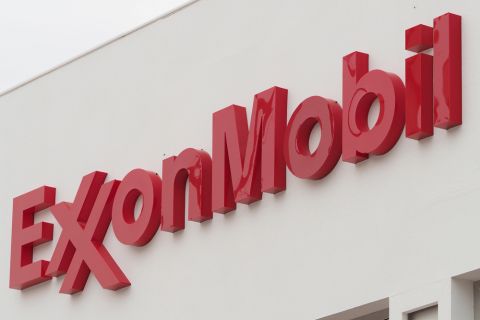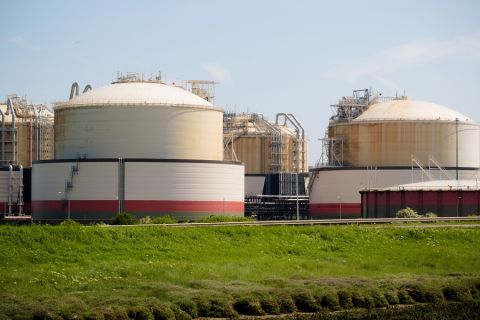Oil is a very popular commodity due to its high consumption levels and versatility as a key component in numerous products including fuels, chemicals, and plastic items. According to the International Energy Agency (IEA), close to 90 MMbbl are used globally every day. This makes oil the most widely traded commodity, both physically and financially, around the world.
However, high consumption and versatility aren’t the only things for which oil is well known. Mention the oil markets, and it’s a good bet that volatility and its cousins instability and unpredictability are among the first things that come to mind for many people.
The oil market is highly complex, with multiple fluctuating supply- and demand-side variables including geopolitical issues, new oil sources, and speculative trading that contribute to oil’s extreme volatility. This volatility significantly increases risk exposure and makes price clarity elusive for producers, refiners, merchants, and traders. The most recent price outlook from the US Energy Information Agency (EIA) reflects this situation: Its forecast for 2035 ranges from a low of US $50/bbl to a high of $200/bbl.
Geopolitical risk
Supply disruptions due to geopolitical issues have become relatively frequent events, causing significant price spikes as the delicate supply/demand balance is thrown off kilter. Issues in the Middle East in particular have a large influence on oil prices because of the region’s massive reserves. For example, take the Arab Spring, which caused crude output to fall quickly and significantly. Oil prices rose from $92/bbl in January 2011, just prior to unrest in Tunisia, to $120/bbl in April after violence erupted in Libya, according to the EIA.
In addition, if Iran makes good on threats to close the Strait of Hormuz, through which one-third of the world’s traded oil passes, energy analysts predict oil prices could rise 50% or more within days. Speculation about the closure alone has been known to keep oil prices above $100/bbl, according to the Baker Institute.
Outside of the Middle East, political issues in other important supply regions are creating additional market uncertainty. In Latin America the trend toward greater nationalization of private investment in energy production has had a detrimental impact on output, while in Russia difficult business conditions have reduced the expertise and investments required to continue the development of production infrastructure. And in Argentina a nascent nationalization program threatens at least part of the country’s 700,000 b/d of production.
It is an understatement to say that uncertainty and volatility caused by geopolitical issues make for a very risky market and render any kind of business planning a complex and seemingly insurmountable task for oil market participants.
Demand-side ambiguity
While geopolitical developments and technical uncertainties create significant doubt as to the levels of future crude supply, forecasting market demand is no less challenging. All major centers of consumption have been affected to some degree by the global economic slowdown. While overall consumption continues to grow, according to the IEA, the rate of growth in global crude demand fell from an annualized growth rate of 3.2% in 2010 to 0.9% in 2012.
In Europe, for example, the Euro crisis has reduced regional demand for crude and crude products to levels not seen since 1987. Full-year demand in 2011 fell below 13.5 MMb/d. This is 1.5 MMb/d lower than the 10-year high in 2006 and more than 2.1 MMb/d lower than the record high of 1979. And in China, an epicenter for global demand growth over the past decade, oil consumption in 2012 flattened out to the same levels seen in 2011. Furthermore, while the US is still the world’s single largest consumer of crude, the recession of 2009 and a decrease in demand for motor fuels has driven oil consumption down to a 12-year low of 18.8 MMb/d.
However, the future of oil consumption is not relegated to the picture of gloom and doom painted by these numbers. There are signs that the economy is starting to turn around. According to the International Monetary Fund, global economic conditions improved modestly in 3Q 2012, primarily due to increased activity in emerging market economies and the US, and economic growth is projected to rise throughout 2013.
The fact of the matter is, despite all of these statistics, no one knows for certain what will happen. As a result, the global demand forecast remains ambiguous, with projections for near-term demand only slightly clearer than the 10-year outlook. Combine these conditions with the aforementioned supply-side issues, and oil market participants are left with at best a cloudy view of the future riddled with unpredictable storms that can cripple their businesses if not properly managed.
The speculators’ effect
Despite the global downturn, trading in physical crude and derivative instruments has been robust over the past few years. The New York Mercantile Exchange/CME exchange recovered from the financial crisis of 2008 with significant growth throughout 2012. Besides the larger producers, traders, industrial consumers, and merchants that have always participated in the market, many new players are starting to speculate with the sole purpose of financial gain.
The oil futures market trades more than 1 Bbbl of oil each day. The entire world produces only around 85 Mbbl a day – meaning that more than 90% of trading involves speculators who never actually take physical possession of oil, according to the New York Times. These speculators enter and exit the market quickly, basing trading decisions solely on price momentum and recent volatility.
There is no absolute evidence to show that this activity has a sustained and quantifiable effect on the market, but many industry observers believe that volatility is being exacerbated through high-volume trading by speculators (the “speculators’ effect”), particularly during periods with a high level of market uncertainty.
Solutions for an unstable market
The potential for volumetric shocks on both the supply and demand side of the crude market combined with the potential for increased volatility due to the speculators’ effect leaves companies increasingly exposed to risk. To effectively and efficiently manage this exposure, market participants must have sophisticated, end-to-end commodity management solutions that provide both the metrics required to measure exposure and the insights needed to successfully manage it. These sophisticated solutions enable crude market participants to:
- Mitigate enterprise risk by delivering a real-time, holistic view of their business that integrates all physical and financial exposures alongside operational, counterparty credit, and regulatory risk exposures;
- React quickly to unforeseen market events and daily volatility by providing advanced analytics that support smarter, faster decision-making;
- Maximize profitability by integrating physical and financial instruments, optimizing cross-commodity and foreign exchange hedging strategies, and rapidly identifying arbitrage opportunities across markets and products; and
- Minimize supply chain risk by providing inventory management functionality and optimizing product movements and complex itinerary scheduling.
Commodity management solutions are most commonly available in traditional “local” or desktop installations; however, they are increasingly being delivered through mobile platforms and as “in-cloud” solutions, giving users multiple deployment options.
The new risk management imperative
The oil business was built on the reputation of mavericks and risk-takers. But in today’s climate the risks are so much greater, and the consequences of poor decision-making are far more serious. Unprecedented volatility due to a combination of geopolitical issues, changing demand, speculators, and myriad other factors makes it exceptionally difficult to run a profitable business these days.
An inability to manage this volatility-induced risk has an overwhelmingly negative impact on the bottom line. For many businesses it will be fatal. Mitigating these risks with the use of an advanced commodity management solution is imperative for any firm that plans on a long-term future and takes its shareholders’ interests seriously.
Recommended Reading
Exxon’s Payara Hits 220,000 bbl/d Ceiling in Just Three Months
2024-02-05 - ExxonMobil Corp.’s third development offshore Guyana in the Stabroek Block — the Payara project— reached its nameplate production capacity of 220,000 bbl/d in January 2024, less than three months after commencing production and ahead of schedule.
Venture Global, Grain LNG Ink Deal to Provide LNG to UK
2024-02-05 - Under the agreement, Venture Global will have the ability to access 3 million tonnes per annum of LNG storage and regasification capacity at the Isle of Grain LNG terminal.
What's Affecting Oil Prices This Week? (Feb. 5, 2024)
2024-02-05 - Stratas Advisors says the U.S.’ response (so far) to the recent attack on U.S. troops has been measured without direct confrontation of Iran, which reduces the possibility of oil flows being disrupted.
McKinsey: US Output Hinges on E&P Capital Discipline, Permian Well Trends
2024-02-07 - U.S. oil production reached record levels to close out 2023. But the future of U.S. output hinges on E&P capital discipline and well-productivity trends in the Permian Basin, according to McKinsey & Co.
EIA: Oil Prices Could Move Up as Global Tensions Threaten Crude Supply
2024-02-07 - Geopolitical tensions in the Middle East and ongoing risks that threaten global supply have experts questioning where oil prices will move next.





